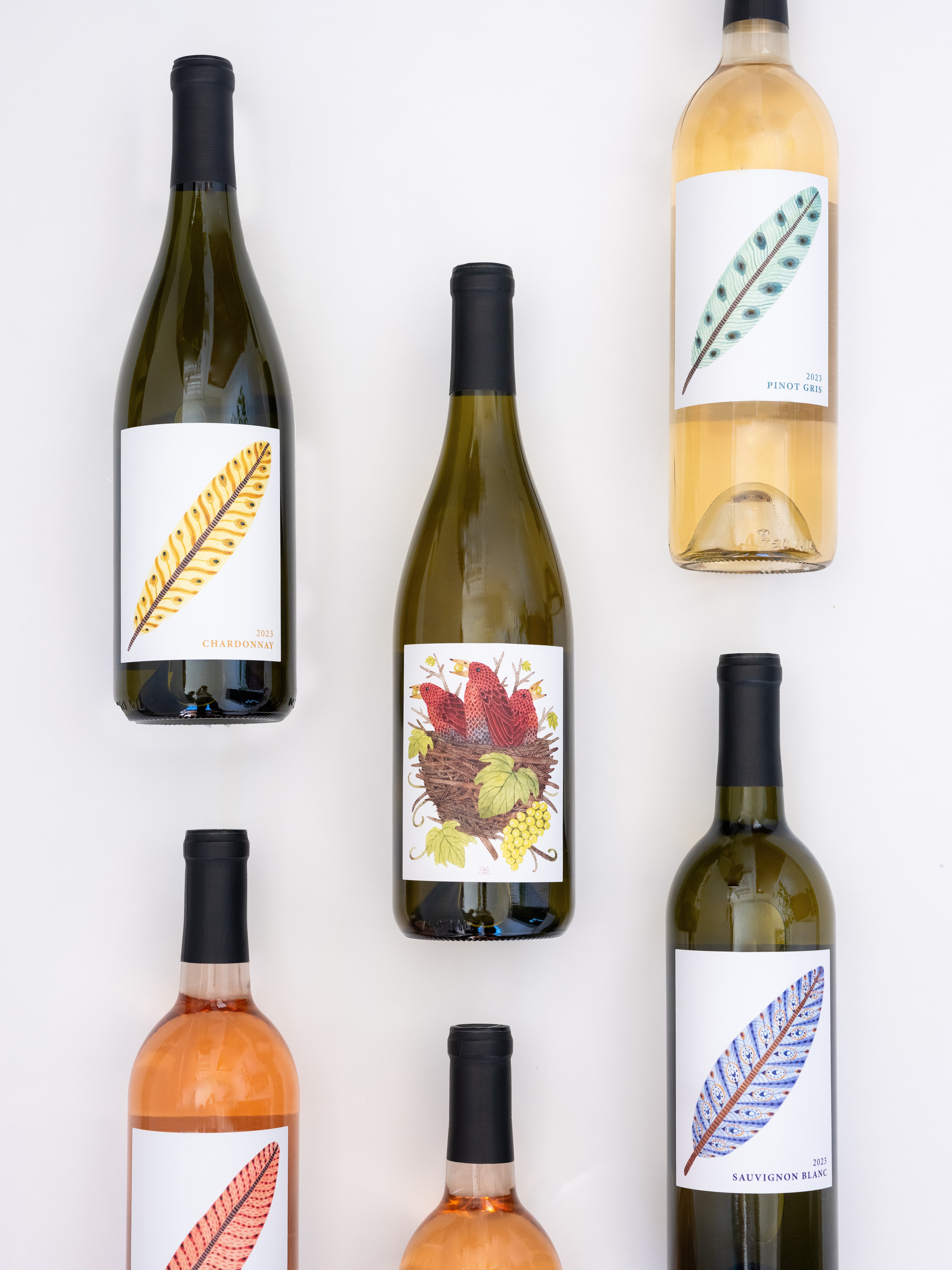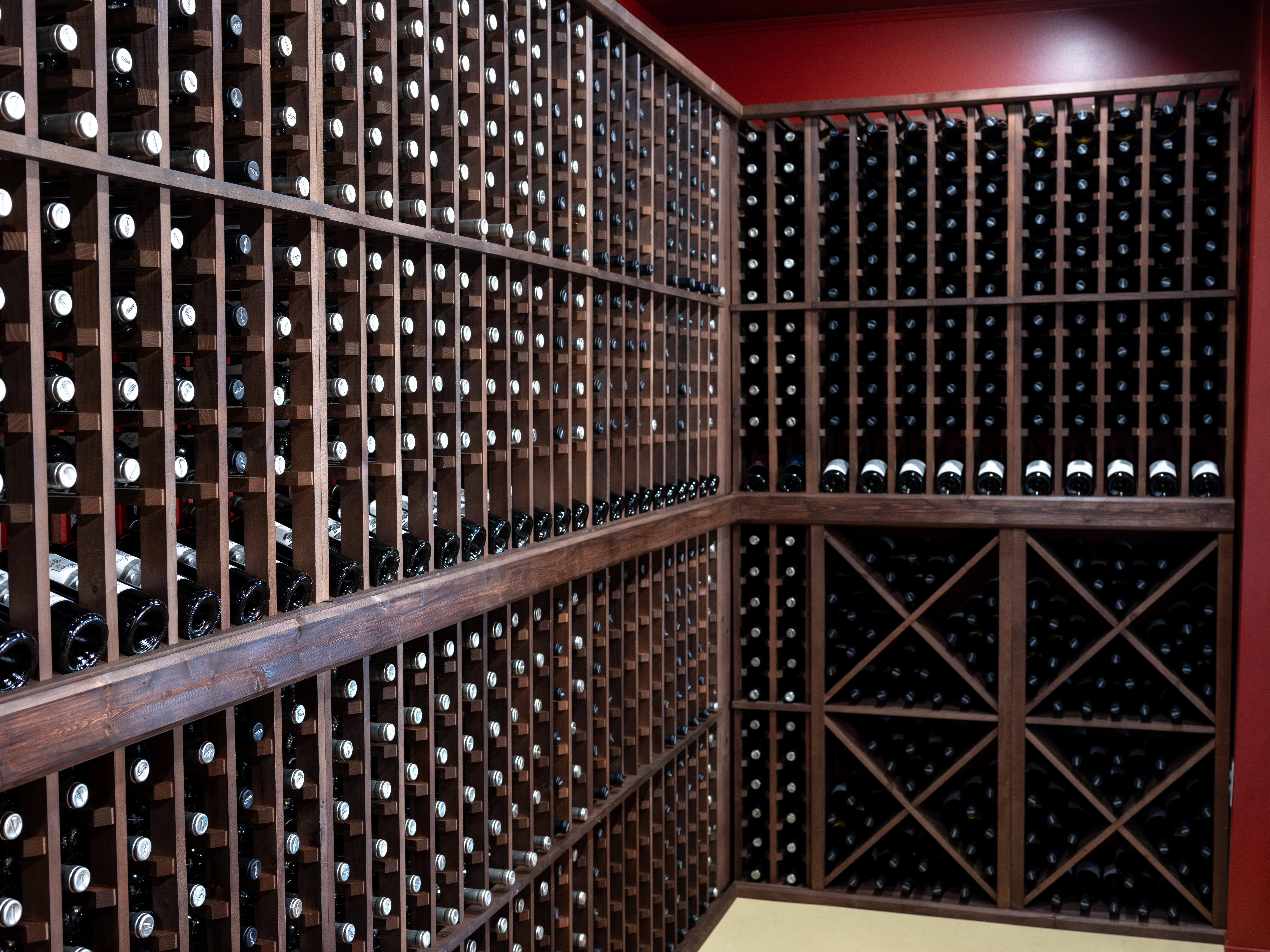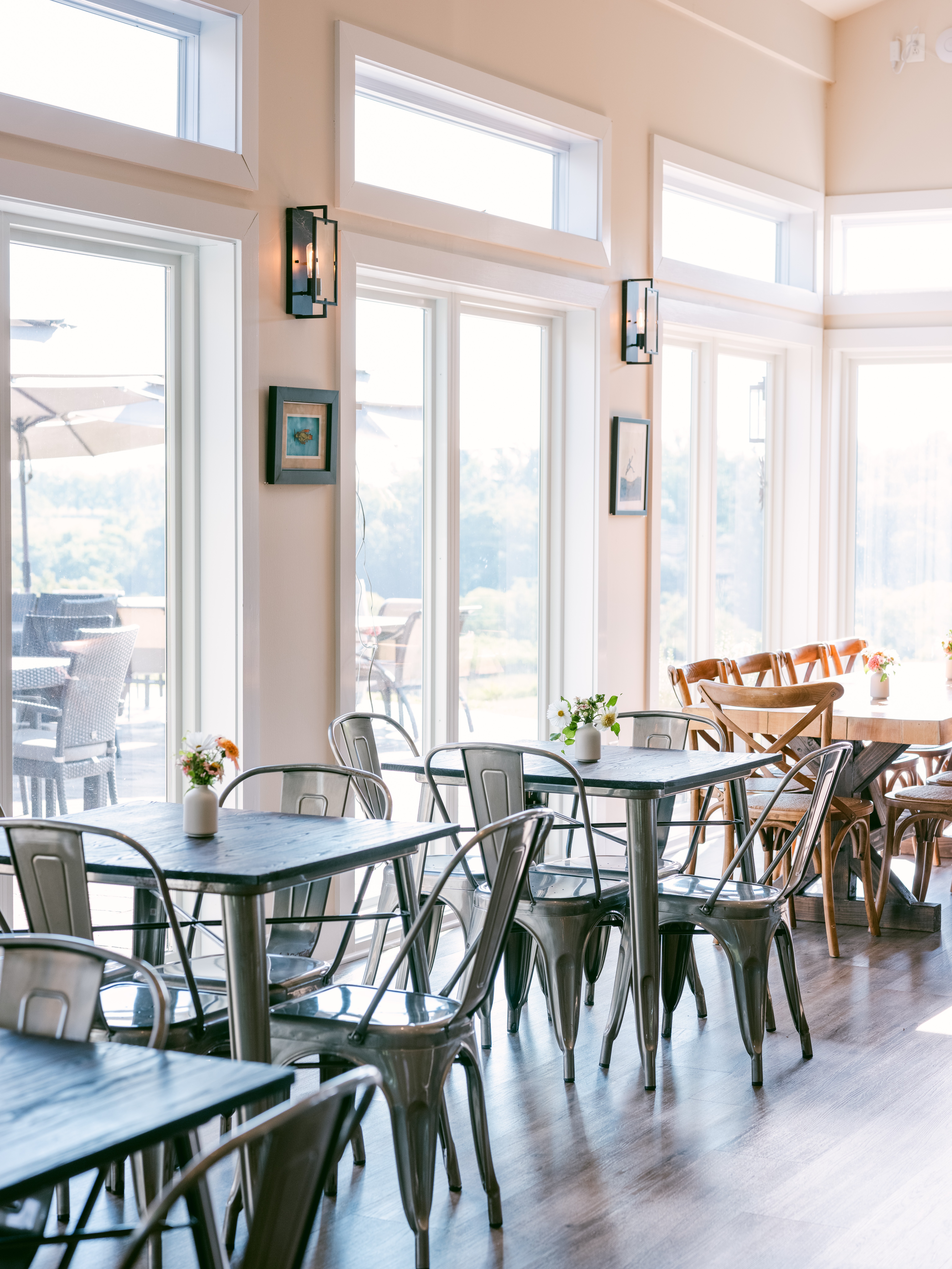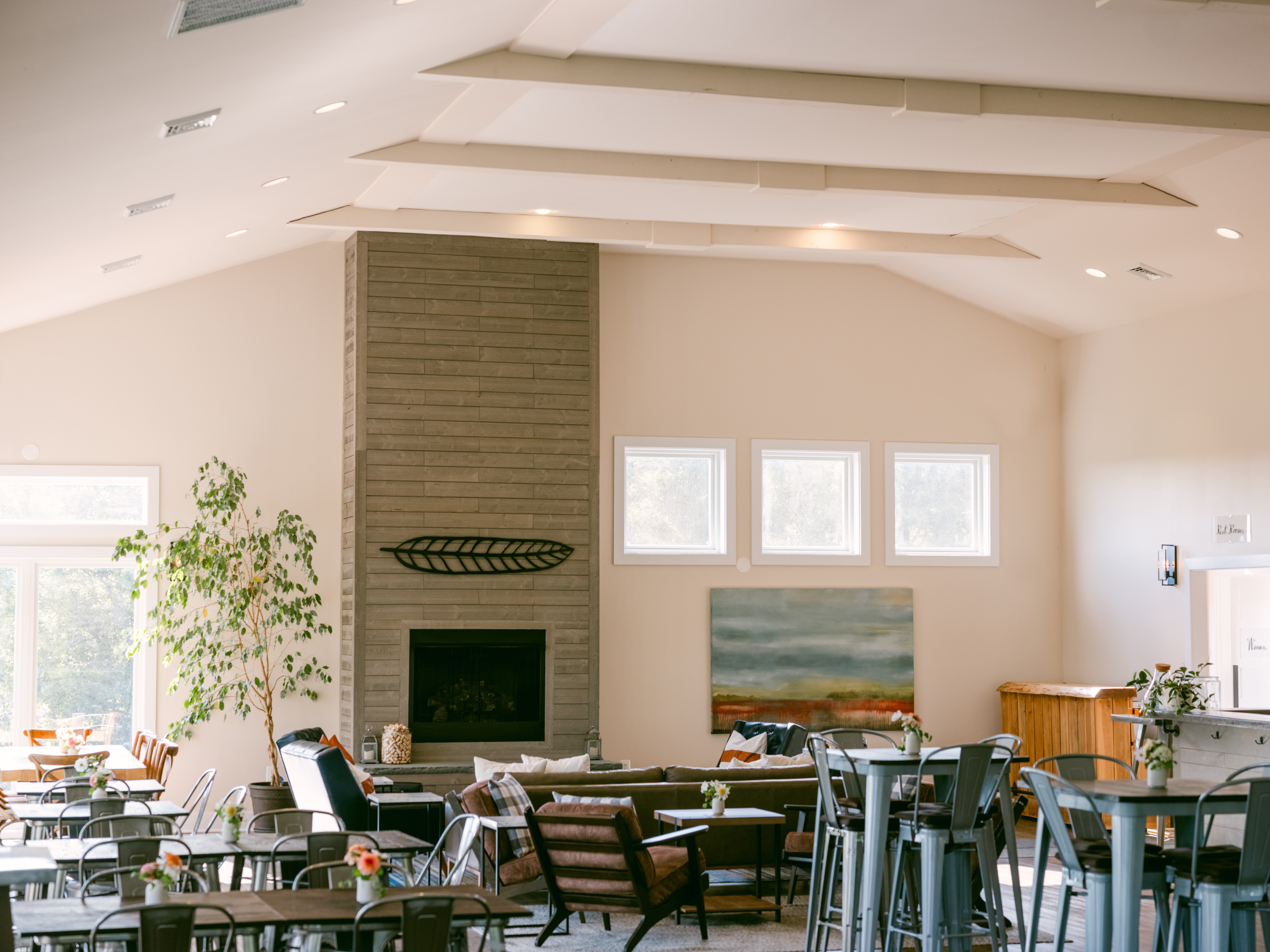We were lucky to catch up with Kiernan Slater Patusky recently and have shared our conversation below.
Kiernan, appreciate you joining us today. So, naming is such a challenge. How did you come up with the name of your brand?
In some ways, naming a business located on a farm that has been a part of the family for more than 300 years is easy. Choose a classic geological feature that predates it all: Slater Run. A spring located at the top of the hill between our two vineyard sites feeds a small tributary, or “run,” to the much larger Goose Creek at the bottom of the hill. While our Slater ancestors chose this hillside for its access to water, we chose it for good water drainage. Continuing the centuries old agricultural tradition that includes cattle grazing and hay making, we added a vineyard near “Slater Run” in 2010.
Our labels reflect the story of our vineyard and winery through photographs taken of family history and commissioned images painted by local artists. Our flagship red blend, called “Roots,” features a black and white photograph of my grandfather Thomas Glascock Slater on horseback jumping a stone fence at the Upperville horse show grounds in 1933; whereas, the photograph on the “First Bridge” wine is of a bridge that my great grandfather and three neighbors had built to make it easier to bring their cattle and product across Goose Creek and on to the Rectortown train depot.
The image of a bird’s nest and individual colored feathers, all painted by local Upperville artist Holly Ward Bimba, on a number of labels embodies the idea that the farm has been a nesting place for more than 10 generations. To celebrate the new venture of winegrowing on this historic land, two labels feature the more whimsical art of DC-based artist Bill Rock, on “The Pit Jumper” and “Rocket Fish” wine bottles. The Pit Jumper depicts a figure jumping over a pit trying to grasp the feather floating above, while the Rocket Fish illustrates a fish with rockets propelling it through a blue field of either sky or sea. These labels tell the story, respectively, of the leap of faith it takes to plant grapes in an emerging wine region like Virginia and then the triumph when you beat the odds like the jubilant Rocket Fish. Both wines are also a bit unconventional: The Pit Jumper is composed of 80% Petit Verdot (when that varietal is traditionally a small percentage blending grape), and the Rocket Fish is white Viognier grapes fermented with skin contact (when white wines typically only ferment juice) to produce a light Amber wine.
Our story is one of a traditional family farm: maintaining the love of the land while adapting to the new demands of the day. Our goal is sustainability. The production and tasting facilities are solar-powered and clustered together near our houses to use less open land. The vineyard is dry-farmed (as most are in Virginia) with an integrated pest management philosophy guiding daily operations. Our mission is that this farm will be responsibly Slater-run for many future generations.


Awesome – so before we get into the rest of our questions, can you briefly introduce yourself to our readers.
Our business began with the land, which richly intertwines family and community. As part of the local farming community for more than 300 years, our family has adapted over generations to create businesses that are sustainable both environmentally and financially. Currently, we farm about 13 acres of winegrapes and produce about 3800 cases of wine annually. We strive to maintain a healthy landscape and we aim to make investments that future generations can enjoy. We chose vines as a new crop on our farm in 2010 in part due to its high density planting that also produces high yields in relation to the acreage planted. The small percentage of the family farm planted in grapes allows for great biodiversity: grazing cattle, hay fields, wildlife habitats, and open fields for horses and riders to traverse from farm to neighboring farm. Much of the vineyard work is done by hand to lessen disease pressure, while also reducing soil compaction and emissions created by an excess of tractor work. Our 100% solar-powered facility is nestled into the hillside among a cluster of other farm buildings to blend into the landscape as naturally as possible. Three generations of our family currently work to make Slater Run the special place it is. In the community, we show up as a vendor at local events like our weekly farmer’s market; we provide wine at a discount to local non-profits for their fundraisers; we host an annual “Crabfest” to raise money for our local food pantry. We are probably most proud when we make our family and local community proud–when they bring their friends to the winery to share what they love about our place or when they can boast about how we give back to the community. That warmth we then hope to extend to every newcomer who steps through the tasting room doors.



Can you tell us the story behind how you met your business partner?
I met my business partner, Chris Patusky, in a bar in Washington, D.C.. His cousin (and my roommate at the time) introduced us, and five years later we were married. When we met, Chris was a lawyer and I was a healthcare consultant, then graduate student, then teacher. We moved to Philadelphia after we got married, where we both worked in academia and had our two children. Next stop: Baltimore, where Chris worked in state government and I stayed home with the children, while the idea of planting a vineyard on the family farm in Virginia quickly germinated. Chris attended a vineyard seminar in 2008 hosted by Penn State with my father, Bob, and my brother, Rucker. Chris grew up in a city and had lots of questions about our plan for the future of the farm. The vineyard joined two of our visions: Chris has a true entrepreneurial spirit, and I wanted to spend as much time as I could with my children while also having a career. Perhaps with a bit of naivete, we made the leap and planted the first five acres of Slater Run Vineyards in 2010.


Okay – so how did you figure out the manufacturing part? Did you have prior experience?
We manufacture wine. While the work in a wine cellar usually is portrayed as more romantic than the business of a factory, the work flow is similar. We take a raw material from the field (grapes) and bring it into a production area to be processed by people using large equipment and stainless steel tanks, while following strict safety and sanitary protocols. We also have loud music playing while we work, and we benefit from the gorgeous smells and tastes of juice as it ferments. It certainly does not feel like a factory, but the work is very precise. I knew very little about winemaking before we hired our Winemaker, Katell Griaud, to produce our first vintage in 2014. Katell grew up in the wine business in France on her family’s wine property Chateau Kalian in Monbazillac. She earned her Masters in Oenology from Bordeaux University and has made wine in New Zealand, France and Virginia. Luckily, she is also a great teacher. Although my title may be “Owner” on my business card, my title in the winery is “Cellar Rat.” I have learned over the years by following Katell’s direction. Certain wine chores are repeated daily, even multiple times per day, like pumpovers and punchdowns, so you tend to learn quickly. Every task begins and ends with cleaning, as sanitation is crucial. Although the cleaning can be tedious, it also creates a great satisfaction as you hose down and squeegee water on the floor into a central trench drain and not a thing is out of place. You hang your tools on the wall and walk away knowing the stage is set for next task at hand.


Contact Info:
- Website: www.slaterrun.com
- Instagram: https://www.instagram.com/slaterrunvineyards/
- Facebook: https://www.facebook.com/slaterrunvineyards
- Linkedin: https://www.linkedin.com/company/slater-run-vineyards/
- Yelp: https://www.yelp.com/biz/slater-run-vineyards-upperville-5
Image Credits
Christopher Patusky Jodi & Kurt Baier Kristin Finn


